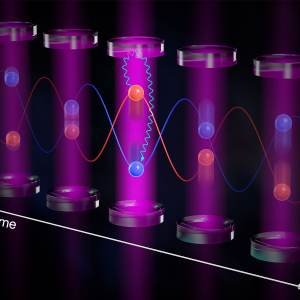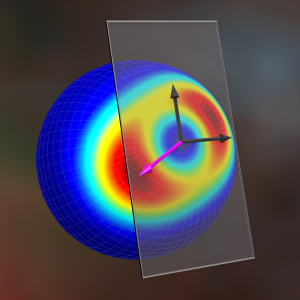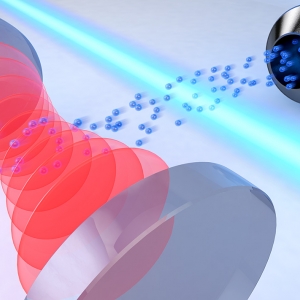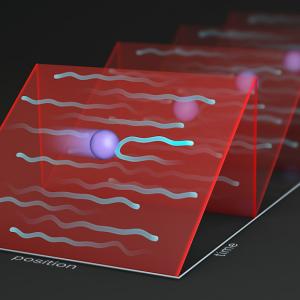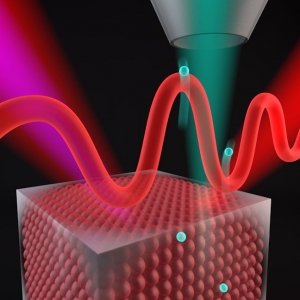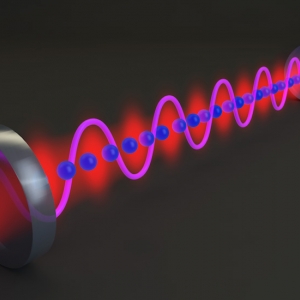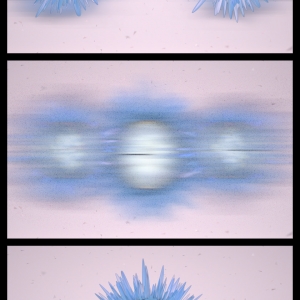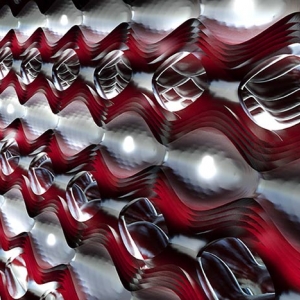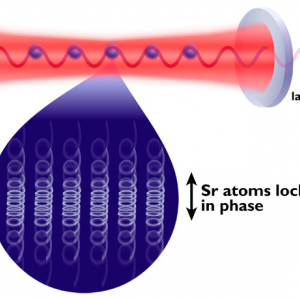Research Highlights
Precision Measurement | Quantum Information Science & Technology
Twisting and Binding Matter Waves with Photons in a Cavity
Published: April 28, 2024
PI: Ana Maria Rey | PI: James Thompson | PI: Murray Holland
Precision Measurement | Quantum Information Science & Technology
Making Use of Quantum Entanglement
Published: November 03, 2023
PI: Murray Holland
Laser Physics | Quantum Information Science & Technology
Laser Cavities and the Quest for the Holy Grail
Published: September 20, 2021
PI: Murray Holland
Atomic & Molecular Physics
A Little Less Spontaneous
Published: June 29, 2018
PI: James Thompson | PI: Murray Holland
Laser Physics | Nanoscience
The Great Escape
Published: June 02, 2016
PI: Henry Kapteyn | PI: Margaret Murnane | PI: Murray Holland
Atomic & Molecular Physics
Talking Atoms & Collective Laser Supercooling
Published: April 21, 2016
PI: John (Jinx) Cooper | PI: Murray Holland
Quantum Information Science & Technology
The Quantum Identity Crisis
Published: October 14, 2014
PI: James Thompson | PI: Murray Holland
Atomic & Molecular Physics
Dealing with Loss
Published: March 05, 2014
PI: Ana Maria Rey | PI: Deborah Jin | PI: Jun Ye | PI: Murray Holland
Laser Physics
A Quantum Leap for Precision Lasers
Published: April 09, 2009
PI: Murray Holland | PI: Jun Ye





